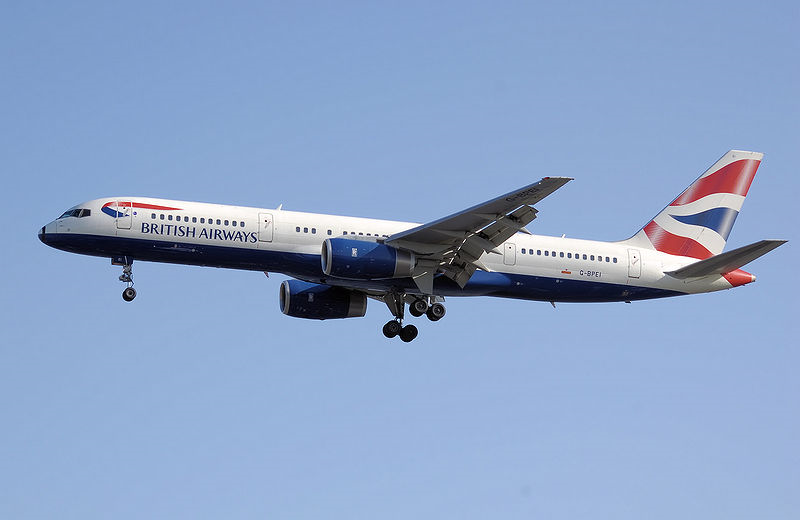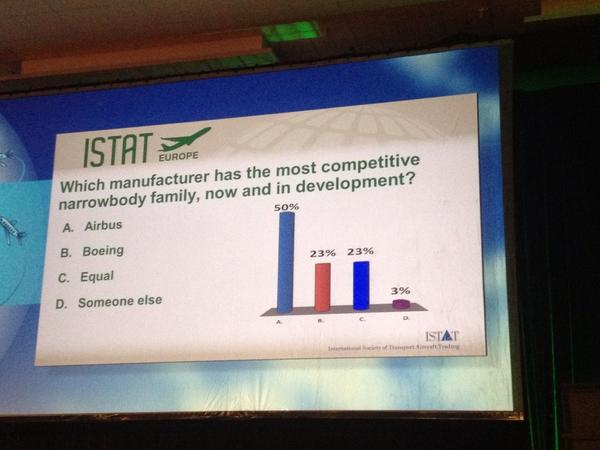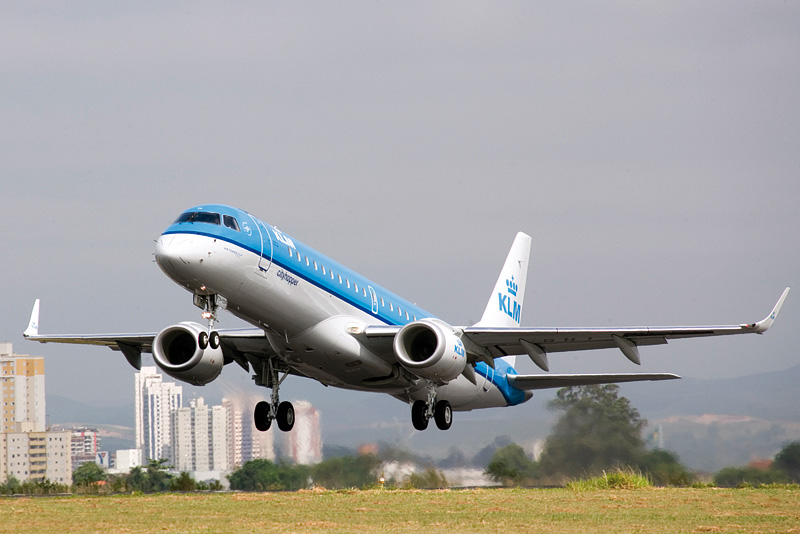Leeham News and Analysis
There's more to real news than a news release.
Oct. 28, 2009: five years ago today, Boeing announced 787 Line 2 goes to Charleston; then, now and the future
This is about eight pages when printed.
It was five years ago today that Boeing announced it would locate the second assembly line for the 787 in Charleston (SC).
The decision was expected and, some say, had actually been made months before–as early as the preceding February. We take a look back at the events leading up to Boeing’s decision to put the second line in Charleston, what’s happened since then and where Boeing will be in five more years.
Odds and Ends: MTU on A380; lessons learned; Alaska Air v Delta; GOL looking for airplanes; Boeing downgrade and upgrade
MTU on A380: The German company MTU, which is a key supplier on a variety of Airbus and Boeing engines, questions the potential market for an A380neo, according to this article from Reuters. Our Market Intelligence indicates Airbus is moving toward a re-engined airplane, although an Airbus official denied this to us this week. Reuters’ sources suggest work is ramping up.
Tapping lessons learned: The Puget Sound Business Journal has a somewhat different approach to the story earlier this week on the groundbreaking for the Boeing 777X wing factory. Steve Wilhelm focuses on Boeing’s tapping of lessons learned on the 737 and 787 programs.
Alaska Air v Delta Air: Months and months ago (almost a year), we were the first to write that hand-wringing over Delta Air Lines’ growth at Seattle, viewed as a major run at Alaska Airlines, was over-wrought. The growth was to support Delta’s growing international hub and while the growth came on many Alaska routes, Alaska’s dominance would prevail. A few months later, we pointed out that Delta’s growth was coming at the expense of Southwest and United airlines; Alaska was solidifying its position. (It also posted record 3Q earnings this week.)
The Puget Sound Business Journal has this story about how the three generations of the Boeing 737 is helping Alaska face off Delta.
GOL looking for planes: Brazil’s GOL is looking at the Boeing 737-7 and the Embraer E-195 E2 to renew its 737NG fleet, according to this Bloomberg report. Next week we’ll be taking another in our series of looks at EMB’s approach to the market with a discussion of the CASM Paradigm.
Boeing downgrade and upgrade: Credit Suisse yesterday downgraded Boeing from Outperform to Neutral (Buy to Hold) on the basis of 787 deferred costs and lower free cash flow. Wells Fargo reiterated its Hold rating. Zacks went from Neutral to Buy. Stern Agee reiterated its Buy.
Part 2: Boeing 757: Airbus A321neoLR as a replacement on long and thin routes
Subscription required.
By Bjorn Fehrm
Part 2 of 3
Introduction
In Part 2 of our three-part 757 Replacement analysis, we take a close look at Airbus’ new 97 tonnes take off weight A321neo, revealed by Leeham News and Comment October 21. We call the 97t airplane the A321neoLR (Long Range); Airbus has yet to name the aircraft, which it began showing to airlines last week.
 We analyze the A321neoLR’s capabilities and limitations when compared to the aircraft it intends to replace, the Boeing 757-200W. We have chosen to do so using a real airline configuration as opposed to an OEM’s typical seating layout. By comparing the 757-200W and the A321neoLR over the route structure that United Airlines is using the 757 today, we can better see the characteristics of the A321neoLR and what operational consequences the differences between the types would mean for the airlines. Before we start, a short recap of Part 1 about the 757 and its replacement candidates. Here is what we found:
We analyze the A321neoLR’s capabilities and limitations when compared to the aircraft it intends to replace, the Boeing 757-200W. We have chosen to do so using a real airline configuration as opposed to an OEM’s typical seating layout. By comparing the 757-200W and the A321neoLR over the route structure that United Airlines is using the 757 today, we can better see the characteristics of the A321neoLR and what operational consequences the differences between the types would mean for the airlines. Before we start, a short recap of Part 1 about the 757 and its replacement candidates. Here is what we found:
- the seating capacity of the A321 is within 10 seats of the 757-200 in a standard configuration; the 737 MAX9 is trailing with about 20 fewer seats.
- the myth about the strong engines of the 757 is just that, a myth.
- the good field performance of the 757 is coming from its wing more than any advantage on the engine side
- the A321neo and 737 MAX9 were hindered in their capability to replace the 757 for long and thin international routes by characteristics that can be changed. For the A321neo, this may be accomplished with rather modest changes to Max Take Off Weight (MTOW) and tankage. For the 737 MAX9, more elaborate changes to the wing and engines are required, both hard to do.

Figure 1. Boeing 757-200 of British Airways which launched the 757 together with Eastern Airlines 1983. Source: Wikimedia.
Summary, Part 2
- We will now look in detail on the changes Airbus is doing on the A321neoLR, what each change brings and any restrictions that remain.
- We will also detail why we think it will be harder for Boeing to match the A321neoLR with a 737 MAX9 development.
- We detail prime, present 757W long-thin routes.
- We present 757W international, A321neoLR and 737 MAX9 “long range” configurations.
- We provide economic comparisons such as Payload-Range charts and Fuel consumption per trip and per seat diagrams.
In the final Part 3, will look at Boeing’s alternative to an A321neoLR, a clean sheet New Single Aisle (NSA) and a prospective Small Twin Aisle (STA) design and how much such an approach would surpass the A321neoLR on medium and long haul networks and when it could be available.
Boeing’s on the defensive in single aisle market as Airbus enhances A321neo
Subscription required.
Introduction
Boeing is on the defensive in the single-aisle market.
The Airbus A320neo family has about a 57% market share against the Boeing d 737 MAX. As recently as Wednesday’s third quarter earnings call, Boeing CEO Jim McNerney expressed confidence in market share recovery to parity. We don’t see this happening.
The development by Airbus of a 97t “A321neoLR” (Long Range) airplane as a 757 replacement for the long, thin routes of around 3,900nm, although a small market of perhaps 100 airplanes, enhances the A321neo model and could give a boost the the A320neo campaigns.
We had the worldwide exclusive on the development of the A321neoLR Wednesday.
Boeing’s image in the single-aisle sector took a big hit at the ISTAT Europe conference last month. About 1,200 people attended the event and in an audience poll, only 23% voted that Boeing has the most competitive narrow body family; 50% voted for Airbus.

Photo taken at the ISTAT Europe conference in Istanbul last month. Photo via Twitter.
Despite Boeing’s public, professed optimism, our Market Intelligence tells us that Boeing is indeed worried about its single aisle market position. And even though the market potential for the A321neoLR is small, there is the knock-on effect to consider. There is demand for a 757 replacement from airlines and in market perception. The same ISTAT Europe conference asked what Boeing should do next; 54% said replace the 757 and another 18% said replace the 737-9, a combined 72% pointing to a need for Boeing to do something with the single-aisle sector.

Photo from the ISTAT Europe conference at Istanbul last month. Photo via Twitter.
Summary
- Airbus’ latest move with A321neoLR increases pressure on Boeing
- A321neoLR could support additional A320neo sales
- 737-9 can’t be further enhanced to match A321neoLR.
- 737-7 unlikely to be built; A319neo becomes niche model
- Market perception gives “most competitive” edge to Airbus
- What Boeing has to do next
Boeing earnings: margins up, cash, deferred costs disappoint some
Boeing announced its third quarter earnings today. Here is the press release. The initial analyst take:
Bernstein Research (Buy)
Boeing reported Q3:2014 core EPS of $2.14, well above our estimate of $1.89 and consensus of $1.98. Revenues of $23.8bn were above consensus of $23.0bnand our estimate of $22.9bn, and Commercial Airplanes margins remained strong at 11.2%.
Fully-reported Q2:2014EPS was$1.86, compared to our estimate of $1.78and consensus of $1.77.
The company raised2014guidanceforcore EPS to $8.10-$8.30from$7.90-$8.10, i.e., by
$0.20/share, and reiterated revenue guidance of$87.5-90.5 bn. Guidance for operating cash flow was raised to greater than$6.25 bn from ~$6.25 bn previously. Margin guidance at BCA is raised to ~10.5% from>10%, while BDS margin guidance remains steady at ~9.5%.
787 deferred production level of $25.2 billion is consistent with our model, but slightly high compared to Boeing’s target of a peak at roughly $25 billion in Q4. Deferred production costs for the 787 increased by $0.95bn in the quarter, compared to $1.1 bn in Q2. We estimate that continued progress at this rate should lead to deferred production peaking at $25.5-26.0billion. While this is slightly above Boeing’s original estimate of ~$25bn, we see it as consistent with our expectations and consensus. 787 cost reduction is central to the longer term cash flow story for Boeing.
Boeing’s 777X wing factory; earnings today
Boeing’s 777X wing factory: We had to bow out at the last minute attending the groundbreaking of the 777X wing factory in Everett (WA), so we’re linking coverage.
Boeing press release, with statistics
Seattle Times, with links to animation and photos
Puget Sound Business Journal, another take vis-a-vis The Times.
This is a major event for Boeing, its Everett workers and the Washington State. Siting the factory here was the culmination of an extraordinarily bitter contract vote in November and a revote in January by IAM 751 members, the union that provides touch labor for Boeing in Puget Sound, including the 777. Boeing conditioned the site selection in Everett on give-backs by 751 in its previously approved contract, and an extension to 2024. After rejecting the contract the first time, 51% of the vote, in a smaller turnout, approved a slight modified offer.
Washington State gave $8.7bn in tax breaks, a US record.
Earnings today: Boeing announces its 3Q2014 earnings today. The link to the webcast is here, beginning at 10:30am EDT. Here’s what to look for in the earnings announcement and teleconference.
Exclusive: Airbus launches “A321neoLR” long range to replace 757-200W
Airbus has started marketing a long-range, higher gross weight version of the A321neo that it says will have 100nm more range than the Boeing 757-200W used on long range, trans-Atlantic routes, Leeham News and Comment has confirmed.
We learned three weeks ago Airbus was working on what we will call the A321neoLR (Long Range); Airbus doesn’t yet have a name for it, but began showing the details to airlines a week ago. The airplane is a higher gross weight aircraft, at 97 tonnes, and will have three auxiliary fuel tanks. With most long-range 757 configurations around 169 seats (United Airlines), the A321neoLR will have 164 seats, a slight loss, with 20 lie-flat business seats and the remainder in coach configuration.



CASM Paradigm: Lower Seat Mile Cost or Higher Yield; Evaluating the GOL competition
Subscription Required
Introduction
As Brazil’s budget airline GOL reportedly evaluates whether to acquire 20 Boeing 737-7s or Embraer E-195 E2s, the principal of the “CASM Paradigm” is a concept worth examining.
The competition is also what might be seen as a contrary competition. Airframers agree: the airline industry is upgauging. Capacity discipline, long elusive until after the global financial collapse of 2008, has been driving load factors higher. But lowering unit costs, or the Cost per Available Seat Miles (CASM) has long been the principal measure by which airlines, OEMs and aerospace analysts measure efficiency.
Although Trip Costs of aircraft operating over a route is important, the trend toward upgauging at all levels clearly is the driving force.
Figure 1. It’s an age-old debate: the cost per available seat mile (CASM) vs trip cost. CASM typically wins, and the airline industry is migrating toward larger aircraft. Embraer, not surprisingly, thinks this has gone too far. Graphic: Embraer, reprinted with permission. Click on image to enlarge.
Embraer takes a different view, arguing that trip costs and a smaller airplane should trump the CASM obsession. A smaller airplane will mean higher yields, EMB says. A larger airplane provides lower trip costs but drives yield lower.
We visited Embraer’s headquarters earlier this month and received a full briefing on what EMB calls the CASM Paradigm. In our report today, we detail the presentation and discuss other considerations beside CASM vs Trip Costs that drive the size of the aircraft acquired.
Summary
Read more
2 Comments
Posted on October 26, 2014 by Scott Hamilton
Airbus, Boeing, Bombardier, CFM, CSeries, Embraer, Leeham News and Comment, Pratt & Whitney, Premium
737, 737-7, 737-700, A320, Airbus, airlines, Boeing, Bombardier, CFM, CSeries, E-195 E2, Embraer, GOL, Pratt & Whitney, Southwest Airlines, WestJet